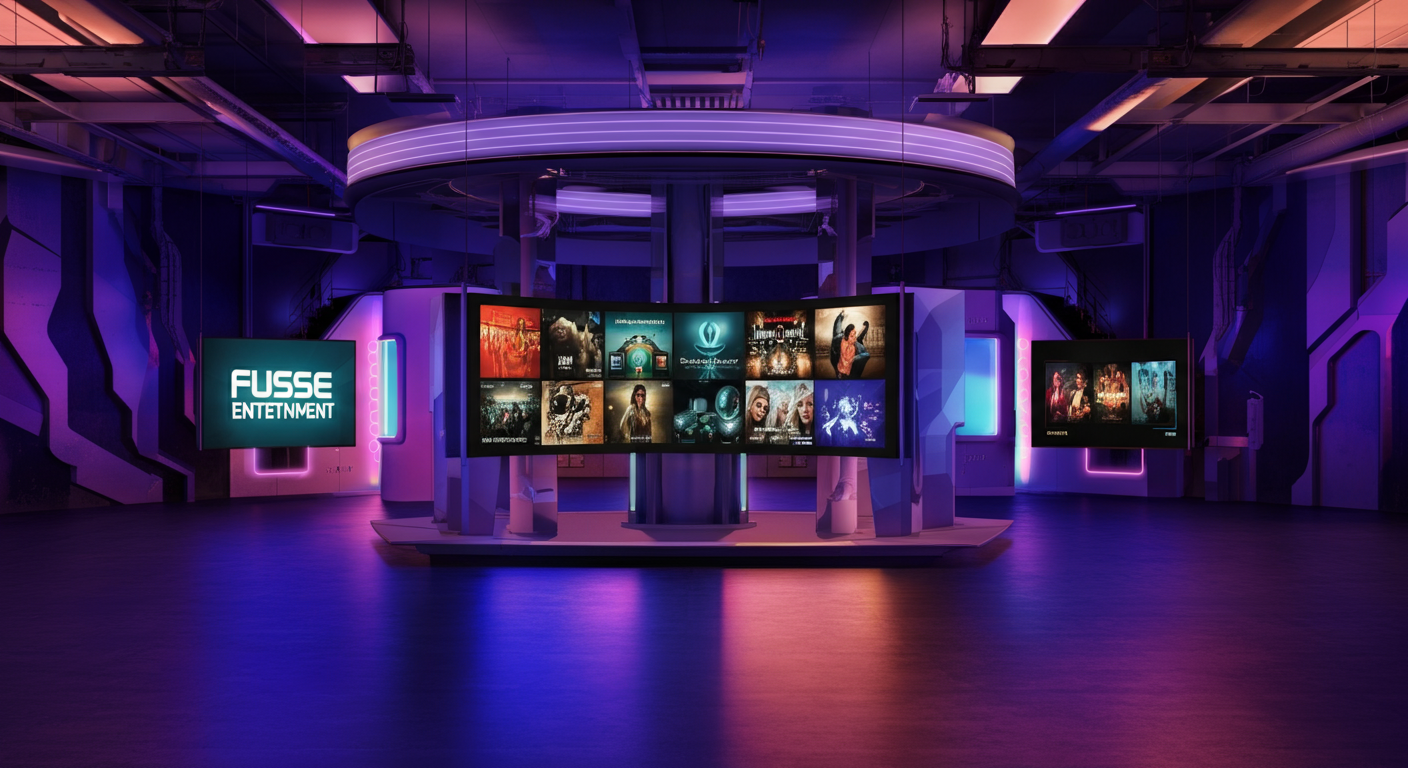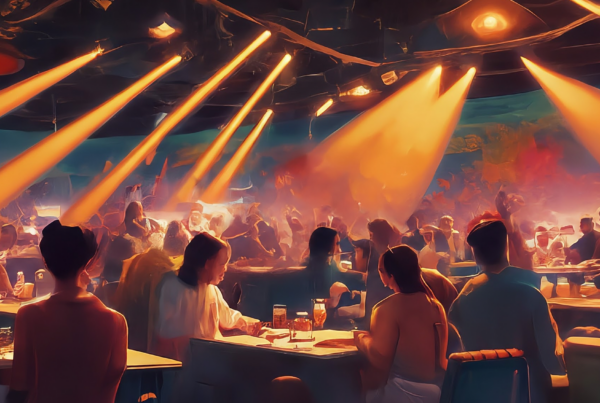In today’s competitive landscape, businesses in the hospitality and entertainment industries are constantly seeking innovative ways to enhance the customer experience across multiple locations. Imagine walking into a bustling bar or a vibrant casino, each offering a unique yet cohesive entertainment experience, no matter where you are. This is the power of centralized entertainment strategies for multi-location businesses.
For multi-location organizations, especially those in the entertainment sector, the ability to deliver consistent and engaging programming is paramount. Customers expect their favorite restaurants, bars, or casinos to offer seamless entertainment experiences. As businesses expand, maintaining this consistency becomes a challenge. This is where centralized entertainment strategies come into play, offering a solution that not only enhances customer satisfaction but also boosts operational efficiency.
At DLM Media, we understand the intricate needs of multi-location businesses. Our expertise in commercial video programming allows us to offer tailored solutions that ensure your entertainment offerings are both engaging and reliable. Whether you’re aiming to enhance the atmosphere in a restaurant or provide cutting-edge entertainment in a casino, our strategies are designed to meet your specific needs.
In this blog post, we’ll explore key strategies for implementing centralized entertainment solutions. From choosing the right programming provider to understanding the legal aspects of commercial video programming, we’ve got you covered. Join us as we delve into how DLM Media’s services can transform your multi-location business into a beacon of entertainment excellence.
Understanding Centralized Entertainment Systems
In the realm of multi-location businesses, particularly within the hospitality and entertainment sectors, maintaining a consistent and engaging customer experience is paramount. This is where centralized entertainment systems come into play, offering a unified approach to entertainment across various locations. These systems are designed to streamline content delivery, ensuring that customers receive the same high-quality experience regardless of which location they visit.
Centralized entertainment systems are crucial for creating a cohesive brand experience. By standardizing entertainment offerings, businesses can ensure that their brand message and atmosphere remain consistent across all venues. This uniformity not only enhances brand recognition but also fosters customer loyalty, as patrons can expect the same level of entertainment quality wherever they go.
The Benefits of Uniformity and Control
One of the primary advantages of implementing a centralized entertainment system is the level of control it provides. Businesses can easily manage and update content across all locations from a single point, ensuring that all venues are aligned with the latest promotions, events, or brand messages. This centralized control reduces the complexity of managing multiple entertainment setups and minimizes the risk of inconsistencies.
Moreover, uniformity in entertainment offerings leads to significant cost savings. By negotiating bulk content licensing agreements and standardizing equipment, businesses can reduce expenses associated with individual location setups. This approach not only cuts costs but also simplifies maintenance and technical support, as all locations use the same systems and content.
Case Studies of Successful Implementation
Several businesses have successfully leveraged centralized entertainment systems to enhance their operations. For instance, a prominent restaurant chain implemented a centralized video programming solution, resulting in a 20% increase in customer satisfaction scores. By providing consistent entertainment across all branches, they were able to create a familiar and enjoyable atmosphere for diners, regardless of the location.
Another example is a casino group that adopted a centralized control system for its gaming and entertainment offerings. This allowed them to quickly adapt to market trends and customer preferences, leading to a notable increase in foot traffic and customer retention. These case studies highlight the tangible benefits of centralized systems in driving business success.
Enhancing Customer Experience Through Centralization
Centralized entertainment systems not only streamline operations but also significantly enhance the customer experience. By providing a consistent and high-quality entertainment environment, businesses can create memorable experiences that keep customers coming back. This is particularly important in the competitive hospitality industry, where customer satisfaction is a key differentiator.
Furthermore, centralized systems enable businesses to gather valuable data on customer preferences and behaviors. This data can be used to tailor entertainment offerings and marketing strategies, ensuring that businesses remain responsive to customer needs and trends. By leveraging this information, businesses can continuously refine their entertainment strategies to maximize customer engagement and satisfaction.
Implementing Centralized Entertainment Solutions
For businesses in the hospitality and entertainment sectors, implementing centralized entertainment solutions can significantly enhance customer experiences across multiple locations. This process involves several strategic steps to ensure a seamless transition and effective integration. By centralizing entertainment, businesses can provide uniform and engaging experiences that resonate with their brand identity.
To successfully implement these solutions, companies must consider various factors, including technology infrastructure, content selection, and staff training. A well-executed plan can lead to improved operational efficiency and customer satisfaction, ultimately boosting the business’s bottom line.
Assessing Current Entertainment Infrastructure
The first step in implementing centralized entertainment solutions is to assess the existing infrastructure. Businesses should evaluate their current systems to identify any gaps or limitations. This assessment should include an inventory of hardware, software, and content delivery methods currently in use.
Understanding the strengths and weaknesses of the current setup is crucial for determining the necessary upgrades or changes. Businesses should also consider the scalability of their infrastructure to accommodate future growth and technological advancements. This initial evaluation sets the foundation for a successful transition to a centralized system.
Selecting the Right Technology and Content
Once the current infrastructure has been assessed, the next step is to select the appropriate technology and content for the centralized entertainment system. Businesses should choose technology solutions that are compatible with their existing systems and can support high-quality content delivery across all locations.
Content selection is equally important, as it must align with the brand’s image and customer preferences. Businesses should consider partnering with reliable content providers, such as DLM Media, to ensure access to diverse and engaging programming. This partnership can also offer insights into industry trends and customer preferences, aiding in content curation.
Training Staff and Managing Change
Implementing a centralized entertainment solution requires effective change management and staff training. Employees must be trained to operate the new systems and understand the benefits of centralized entertainment. Training programs should be comprehensive and tailored to the specific needs of each location.
Additionally, businesses should communicate the advantages of the new system to staff, emphasizing how it enhances the customer experience and streamlines operations. By involving employees in the transition process, businesses can foster a sense of ownership and commitment to the new system, ensuring a smoother implementation.
In conclusion, implementing centralized entertainment solutions involves a strategic approach that includes assessing current infrastructure, selecting the right technology and content, and training staff. By following these steps, businesses can enhance their entertainment offerings, improve customer satisfaction, and achieve operational efficiencies across multiple locations.
Maximizing Customer Engagement with Centralized Entertainment
In the competitive landscape of multi-location businesses, particularly in the hospitality and entertainment industries, engaging customers consistently across all venues is crucial. Centralized entertainment strategies offer a powerful solution to enhance customer engagement by providing a unified yet dynamic experience. By leveraging centralized systems, businesses can deliver interactive and personalized content that captivates audiences and fosters loyalty.
Centralized entertainment systems enable businesses to curate content that resonates with their target audience, ensuring that each customer interaction is memorable. This approach not only boosts customer satisfaction but also encourages repeat visits, as patrons know they can expect high-quality entertainment regardless of the location. Let’s explore how businesses can maximize customer engagement through centralized entertainment strategies.
Interactive Content: A Key to Engagement
Interactive content is a cornerstone of effective centralized entertainment strategies. By incorporating elements such as live polls, quizzes, and interactive displays, businesses can create an engaging atmosphere that encourages customer participation. For instance, bars and restaurants can use interactive screens to host trivia nights or sports betting, enhancing the social experience for patrons.
Moreover, interactive content allows businesses to gather real-time feedback and insights into customer preferences. This data can be used to tailor future content offerings, ensuring that entertainment remains relevant and appealing. By actively involving customers in the entertainment process, businesses can create a sense of community and belonging, which is essential for building long-term loyalty.
Personalized Experiences Through Data Insights
Centralized entertainment systems equipped with data analytics capabilities enable businesses to offer personalized experiences that resonate with individual customers. By analyzing customer data, businesses can identify trends and preferences, allowing them to tailor content to specific demographics or even individual patrons.
For example, a casino might use data insights to offer personalized gaming experiences or targeted promotions to frequent visitors. This level of personalization not only enhances the customer experience but also increases the likelihood of repeat visits. By leveraging data-driven insights, businesses can ensure that their entertainment offerings remain fresh and engaging, catering to the evolving tastes of their audience.
Customer Feedback Mechanisms
Implementing robust customer feedback mechanisms is essential for refining centralized entertainment strategies. By actively seeking and responding to customer feedback, businesses can identify areas for improvement and ensure that their entertainment offerings meet customer expectations. Feedback can be collected through surveys, social media interactions, or direct communication channels.
Testimonials and reviews play a crucial role in shaping the perception of a business’s entertainment offerings. Positive feedback can be highlighted in marketing materials to attract new customers, while constructive criticism can guide improvements. By valuing customer input and demonstrating a commitment to enhancement, businesses can build trust and loyalty among their patrons.
Enhancing Business Success with Centralized Entertainment
As we delve into the world of centralized entertainment strategies for multi-location businesses, it becomes evident that these solutions offer a plethora of benefits. By ensuring a consistent and engaging entertainment experience across all venues, businesses can significantly enhance customer satisfaction and operational efficiency. This approach not only strengthens brand recognition but also fosters customer loyalty, as patrons enjoy a familiar and enjoyable atmosphere regardless of the location.
Implementing centralized entertainment systems provides businesses with unparalleled control over their content and operations. This control enables seamless updates and uniformity in brand messaging, reducing the complexity of managing multiple setups. The cost savings from bulk content licensing and standardized equipment further highlight the financial advantages of centralized systems. These savings, coupled with simplified maintenance and technical support, make centralized entertainment a wise investment for any multi-location business.
- Consistency: Deliver a uniform entertainment experience across all locations, enhancing brand loyalty.
- Cost Efficiency: Reduce expenses through bulk licensing and standardized systems.
- Data Insights: Leverage customer data to tailor entertainment offerings and maximize engagement.
To take advantage of these benefits, businesses should begin evaluating their current entertainment strategies. Consider partnering with experts like DLM Media to explore tailored solutions that meet your unique needs. With the right strategy in place, your business can transform into a beacon of entertainment excellence, drawing in customers and enhancing their overall experience.
Ready to elevate your customer experience? Visit our website to learn more about how our commercial video programming solutions can revolutionize your entertainment offerings. Join the conversation by sharing your thoughts or questions in the comments, and don’t forget to explore more insightful content on our blog.





